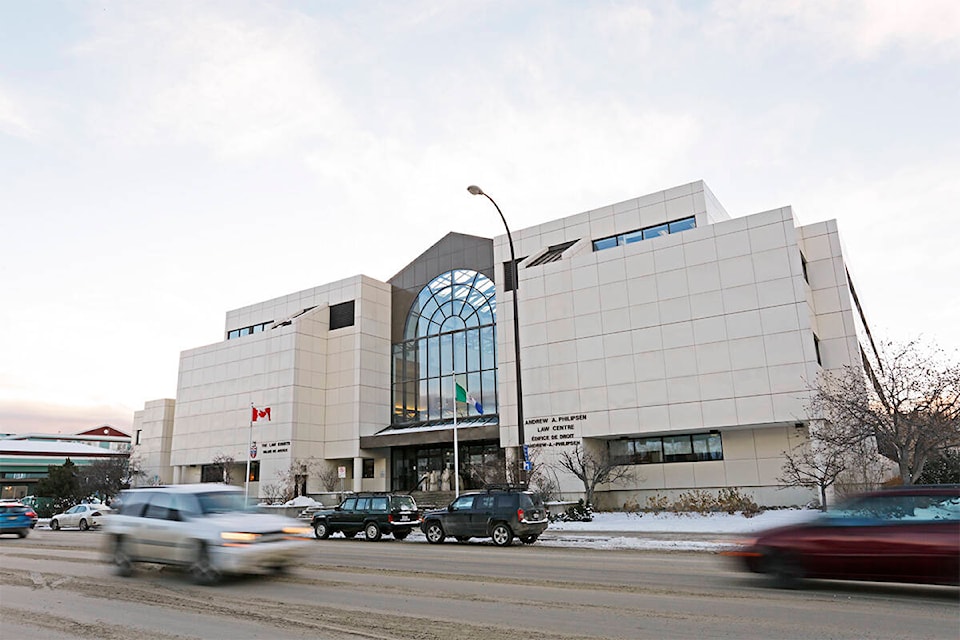The Yukon Territorial Court has found that a woman’s charter rights were breached at the Whitehorse Correctional Centre.
RCMP and jail staff are accused of placing a woman in a video-recorded cell to use the toilet. She was being charged with intoxicated driving.
The woman, whose initials are included in court documents, was arrested for operating a vehicle while under the influence of alcohol in August of 2021. After being taken to the arrest processing unit, the woman asked to use the bathroom. The ruling on her charter rights application that was made public on Sept. 22 states that the toilet the woman was led to was located in an empty group holding cell. The cell was video recorded and the woman argues that video recording her breached her right to be free from unlawful search.
The information published on Sept. 22 came out in a voir dire, a hearing regarding the admissibility of evidence, that preceded the rest of the driving while intoxicated trial.
The voir dire judgement describes how the woman was taken to the cell after being told that for privacy reasons there was a “black box” over part of the camera’s view.
“Initially, this was confusing, at least to me, but ultimately it became clear that there was no actual black box. Rather, the officer meant that the field of view of the camera was obscured by a solid black rectangle on the viewing screen. That rectangle on the screen meant that someone watching the screen would not see what was happening at the toilet. The video record would only show the black rectangle, not the person at the toilet,” the judgement penned by Judge Timothy Killeen reads.
The judgement states that this information provided by the correctional officer was wrong, and there wasn’t a black box blocking the camera’s view. The court heard that the camera recordings are kept on file for two years.
The woman was offered a “privacy blanket” but the court heard that some of the woman’s buttocks were visible on the recorded video when she placed the blanket on the floor, believing the camera could not show or record what she was doing. The judgement states that at least a male police officer and a female corrections officer were present but it is unknown if either watched the video feed.
The judgement states that the woman did not know that a record of her private bodily functions had been created until she saw the video during the disclosure of evidence process for the court case.
“I accept that she was humiliated by the recording. She appeared to be humiliated yet again as the video was played for the court. This should never have had to happen. Everyone has bodily functions. Most people treat them as private. She thought it had been private, until the recording showed up with the disclosure,” Kileen’s judgement reads.
The court heard testimony from a correctional superintendent that suggested the recording of the woman on the toilet may have been the result of a change in practice that was not implemented before she was brought to the processing unit.
“In May 2021, when he started his job, he understood that RCMP policy had changed and they should no longer watch or record as a person used a toilet. He thought the changes were made over the next couple of months. Some cameras needed to be changed. Apparently, that had not been done by the time this accused used that toilet,” the judgement reads.
The court heard that the cameras are in place for safety reasons but the judge found that the rationale for recording inmates does not apply in this case because the woman was not seriously intoxicated and there was no medical distress or suggestion of an overdose. She hadn’t been handcuffed, there was no evidence to suggest she might try to harm herself and she was not violent.
Killeen wrote that he does not understand why the level of control over the woman had to be increased by placing her in a cell just so she could use its toilet. He states no evidence was presented about other washroom facilities but it is hard to imagine that the correctional staff or police are watched or recorded as they use a toilet.
While he stopped short of agreeing that the police officer and corrections officer had lied to the woman in their custody, the judge called the misinformation about the video recording troubling and said he couldn’t conclude there was any good-faith explanation for it.
The judge called the recording of the woman similar to a strip search in terms of its invasion of privacy and agreed that the creation of the recording meets the legal definition of a search.
He added that there was nothing reasonable about what happened to the woman at the correctional centre, citing both the video recording and the fact that she had to enter a cell, a higher level of confinement, in order to use a bathroom. The judge found this breached of her section 8 charter rights. Anything that happened after she entered the cell is to be excluded as evidence in the case.
The Yukon department of Justice would not comment on the specific incident, but maintained that the black boxes are in use. A department of Justice representative said the black boxes are digital images encoded over the camera feed and recording to block the cell toilet from view.
The representative added that there are bathrooms and showers available in the jail’s admissions unit as well as a separate staff bathroom in the arrest processing unit.
In 2021, 1,457 people were held at the arrest processing unit, according to RCMP data acquired by the News.
Contact Jim Elliot at jim.elliot@yukon-news.com
